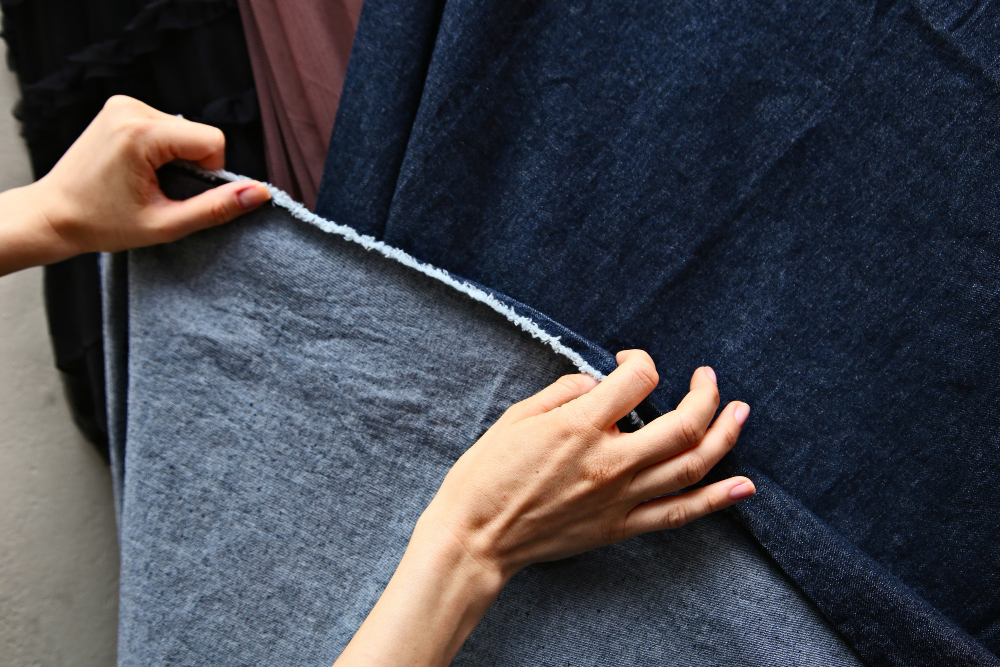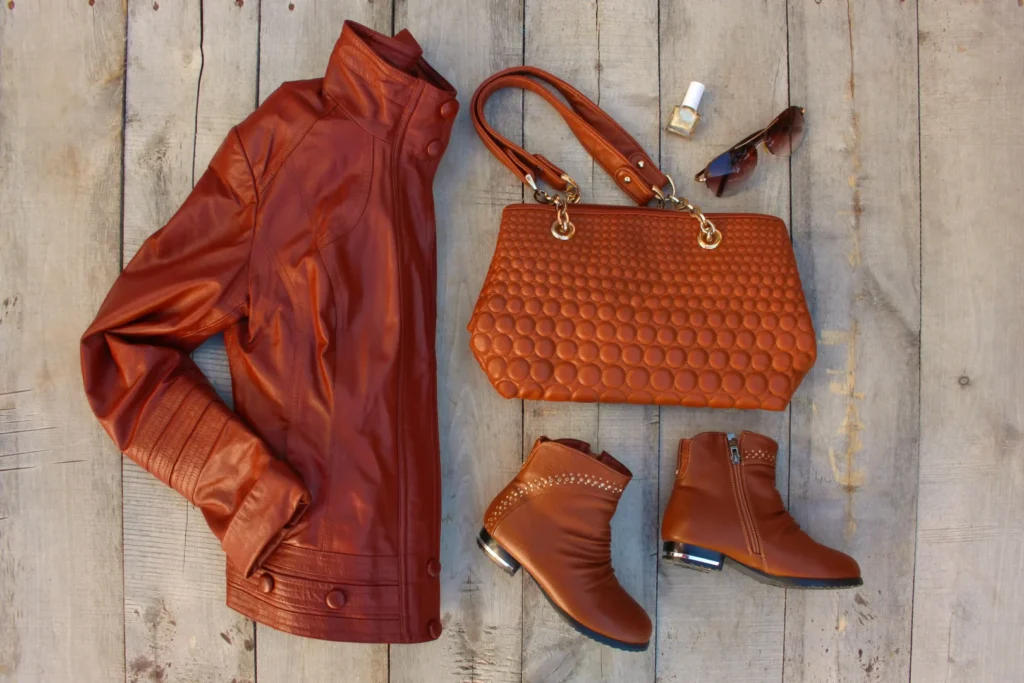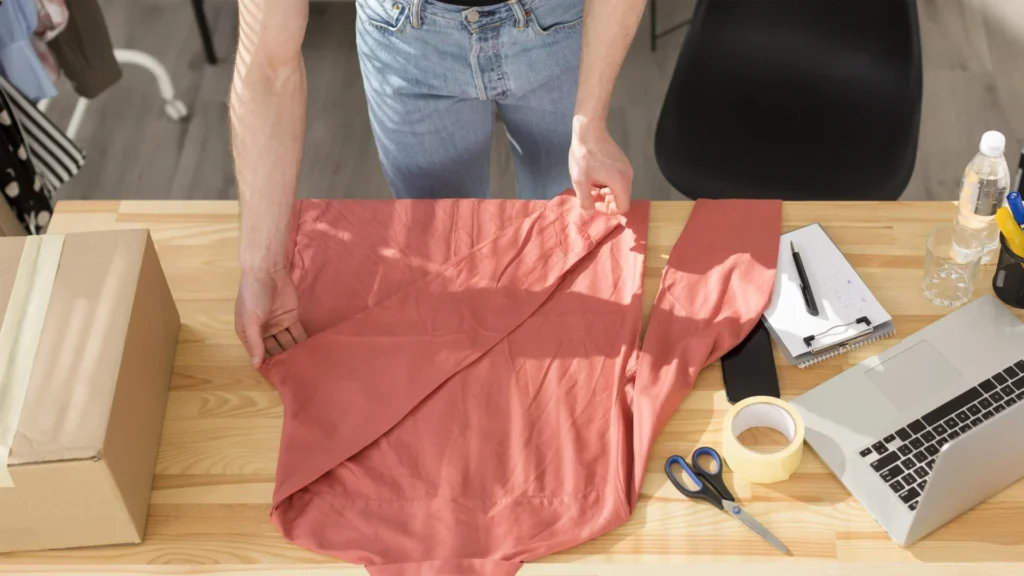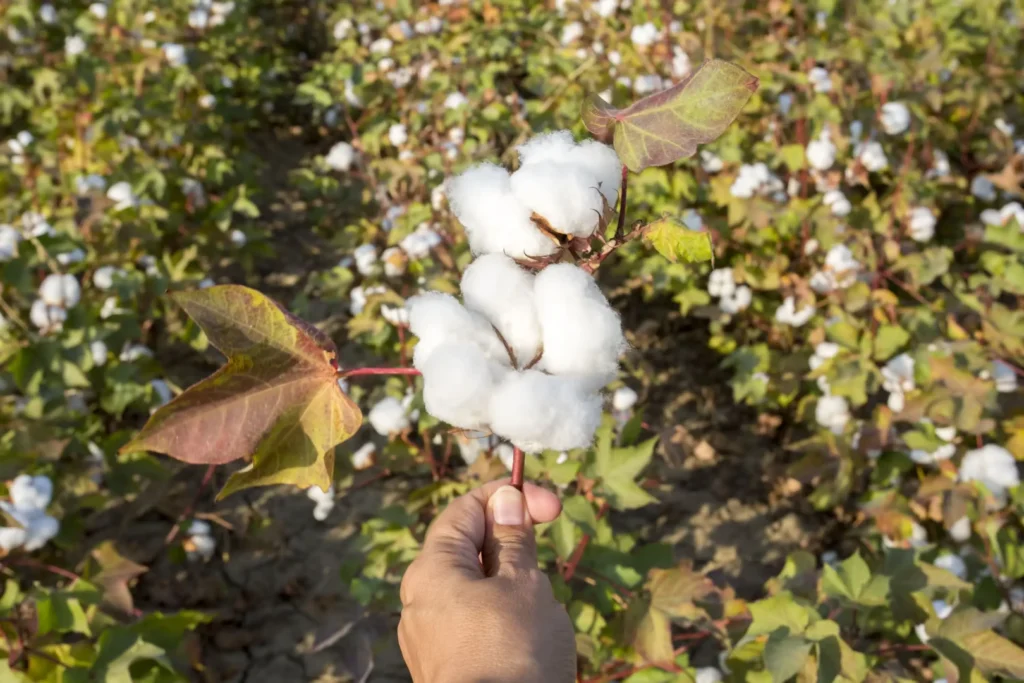Summary
- Knowing the types of fabric can help when creating a fashion collection.
- Each fabric has its features and qualities that make it unique.
- Create your garments and experiment with the best fabrics online. Try Audaces360 for free!
Choosing the right types of fabric can make all the difference for your clothing brand. A great fabric enhances fit, comfort, and finish — key factors in a collection’s success. On the other hand, the wrong choice can lead to garments that don’t sell and sit on store racks.
To avoid this common setback, it’s essential for fashion professionals to understand the different types of fabric, along with their characteristics, uses, and unique features.
In this guide, you’ll find all types of fabric material available to designers. We’ll also look at different types of fabric and how each can shape your collection.
Let’s explore them together!
Sumário
Why understand the difference between the main types of fabric?
Understanding the difference between the main types of fabric is akin to learning to select the best material for different products.
Each fabric has its features that affect how it feels to the touch, behaves, and is best used. For example, soft types of fabric like cotton are breathable, while types of fleece fabric offer warmth and coziness.
Knowing about types of fabrics for clothing helps make smart manufacturing choices. If you’re creating activewear, you might choose types of stretch fabric with moisture-wicking properties.
Furthermore, understanding types of fabric textures helps care for clothes properly — knowing how to wash, dry, and store each fabric means garments last longer and retain quality.
Learn more: 9 fabrics with the perfect fit to use in your fashion collection

How to classify the types of fabric?
The types of fabric can be classified in several ways, taking into account their characteristics. We’ll cover all types of fabric, so you get a full overview:
Fabric composition
Fabrics can be classified based on the fibers they are made from. For example, types of cotton fabric, polyester, wool, silk, and nylon.
Fabric construction
It is related to how fibers are woven or interlaced to form the fabric. Examples include knit fabrics like jersey and rib knit, woven fabrics like denim and twill, and non-woven fabrics like felt and types of velvet fabric.
Weight and thickness
Fabrics can be classified as light, medium, or heavy, depending on the density of the fibers and the amount of material used in manufacturing.
Texture and finish

Some fabrics have distinct textures or special finishes, such as shine, roughness, and softness
Functional properties
It includes characteristics like elasticity, stretch fabrics, moisture-wicking ability, breathable fabrics, shrink resistance, and waterproof fabrics.
End use
Fabrics can also be classified based on their intended purpose, such as activewear, workwear, casualwear, and formalwear.
Learn more: Learn all about textile fibers in our comprehensive guide
14 most common types of fabric in fashion manufacturing
Explore the different types of fabrics, their properties, uses, and unique features.
1. Acrylic
It is a synthetic fabric similar to wool, soft, and with little absorption. Used in activewear and knit fabrics.
2. Cotton
Cotton is a natural fabric known for its softness, comfort, and durability. Its fibers are breathable and absorbent, making it perfect for comfortable clothing in warm weather.
Moreover, its resistance makes it a popular choice for everyday clothing.
3. Crepe
One of the most used type of fabric for making dresses and party attire, due to its perfect drape and great variation in textures and thicknesses.
Plain or printed, there are several types of crepe, such as Crepe de Chine, Crepe Georgette, Crepe Bubble, Crepe Madame, and Crepe Moroccan, all produced with different fibers and highly twisted yarns, such as silk or polyester.
Learn more: Learn more about crepe fabric and its various uses in fashion
4. Elastane
Better known as Lycra, it is an elastic synthetic fiber found in various fabrics, which even in small percentages (from 1% to 5%) increases comfort when wearing the garment.
5. Leather

Various types of leather are suitable for making coats, jackets, and skirts. Usually, the entire untreated piece is purchased.
There are many fabric name categories. Here is a list of the most used:
- Full-Grain: considered the strongest and most durable type of leather, it is used in high-quality wallets, belts, and shoes.
- Corrected-Grain: also known as embossed leather, is the most common type. It can be dyed or printed and is used in shoes, bags, and clothing.
- Suede: it is a popular choice for various fashion applications, as it offers a beautiful matte finish and can be dyed or printed.
- Faux Leather: also known as synthetic leather, it is a material designed to imitate the look and feel of genuine leather. It is cost-effective and animal-friendly.
6. Linen
Types of linen fabric stand out for its versatility, comfort, freshness, and durability. It is a fabric of natural origin, derived from the flax plant, making it very pleasant to the touch.
However, it is a material that wrinkles very easily, which is why it is often combined with other fibers, such as cotton and polyester, to minimize this characteristic.
7. Nylon

The term was once a trademark but today it is commonly used to designate the most resistant fiber there is. Despite being very durable, this fabric is not absorbent and therefore can be uncomfortable and very hot for daily use.
Nylon is generally mixed with other fibers to increase the absorption capacity and increase the durability of the other yarns that are mixed with it.
8. Polyamide
Polyamide is a resistant material used in activewear, socks, and carpets due to its durability and lightness. Flexible and quick-drying, it is ideal for items that need comfort and mobility.
It is available in a variety of textures, such as shiny or satin, offering versatile options. Some types are elastic, useful for clothes that require flexibility.
9. Polyester
It is a synthetic fiber made from petroleum derivatives. It has a wide range of uses, from imitating silk to blending with other yarns.
Technology is mitigating one of the main problems with the types of polyester fabric: the low absorbency.
10. Silk
Natural fiber obtained by opening the cocoons of the silkworm larva. It is a strong fabric but with a delicate and shiny appearance.
Silk has been replaced by some synthetic fibers and mixed with other yarns to reduce the price or produce different effects.
11. Tencel
A fiber made from cellulose pulp by a different process from Rayon. It has characteristics such as good absorption and resistance. Sometimes it receives a finish known as peach skin.
It is usually used in sportswear.
12. Viscose
Viscose is a soft and light type of fabric made from natural cellulose fibers, known for its softness and shine similar to silk. It suits casual, formal, and summer clothes due to its breathability.
This fabric is delicate, prone to shrinking and wrinkling easily, requiring special care in washing and storage.
13. Viscolycra
Viscolycra is a soft and elastic fabric made from a blend of viscose and elastane. Comfortable and flexible, it is used in sportswear, casual fashion, and tight-fitting garments.
Its elasticity allows freedom of movement, while viscose provides breathability. It is easy to wash and maintains its shape after use.
14. Wool
Fiber produced from the shearing of domesticated sheep, is usually warm and resistant. Those labeled as “pure wool” in the USA and Canada have 100% virgin wool.
Those labeled as “mixed wool” contain at least 55% of this fiber mixed with another.
Check out an even more comprehensive list in our e-book!
5 types of sustainable fabric
Sustainable fabrics offer an eco-friendly alternative for clothing and other textile production, contributing to reducing the environmental impact caused by the fashion industry.
Here are some types of sustainable fabrics you can choose in clothing production:
1. Organic cotton

Organic cotton is grown without harmful pesticides, chemical fertilizers, or genetically modified seeds. This makes it safer for farmers, better for the soil, and gentler on your skin.
It uses less water than conventional cotton and supports biodiversity. Many brands now choose organic cotton for t-shirts, baby clothes, underwear, and casualwear.
2. Recycled cotton
Recycled cotton is made from leftover cotton fabric scraps or worn-out clothes. Instead of going to landfills, these fibers are processed and reused to make new textiles.
This process saves water, reduces textile waste, and lowers the need for virgin cotton production. It’s commonly found in jeans, tote bags, shirts, and even home textiles like towels.
3. Hemp
Hemp is one of the most sustainable natural fibers in the world. It grows quickly, requires little water, and doesn’t need pesticides or herbicides to thrive.
Its fibers are strong, breathable, and long-lasting. Hemp is used in everything from eco-friendly clothing and shoes to accessories like hats and bags.
4. Biodegradable Polyamide
Biodegradable polyamide breaks down naturally when placed in the right composting conditions. It helps reduce plastic buildup and environmental pollution over time.
This fabric has the same qualities as regular polyamide — lightweight, strong, and flexible — but with less environmental impact. It’s ideal for activewear, swimwear, and sports fashion.
5. Recycled Polyester
Recycled polyester is made by melting down plastic bottles or old polyester garments. The result is a strong and versatile fabric that looks and feels like new.
It helps reduce the demand for petroleum-based materials and keeps plastic waste out of oceans and landfills. Recycled polyester is widely used in sportswear, jackets, backpacks, and even linings in bags and shoes.
How can technology help you choose the best types of fabric?

Audaces360 is an integrated solution that uses advanced technology to connect the creative and productive stages in the fashion industry. It offers modern tools, giving you freedom to explore all your ideas.
With Audaces Fashion Studio, you can create digital samples, simulating fabric draping and applying realistic colors, prints, and textures in a virtual environment.
It was developed to optimize creation processes, allowing you to visualise how the garments will look on a human body.
Audaces 3D is your fashion company’s next ally to eliminate collection development problems. It is ideal for patternmakers and technical development professionals, assisting on confirm fit and wearability of garments, and approve the first sample digitally, saving time and costs.
FAQ
Fabrics like tightly woven cotton, linen, silk, and high-quality wool resist pilling. Natural fibers with long, smooth strands pill less than synthetic blends.
Viscose is a semi-synthetic fabric made from wood pulp, famous for its silk-like feel, softness, and drape.
Polyester is a synthetic fabric made from petroleum-based fibers, valued for its durability, wrinkle resistance, and versatility.










6 Responses
This is so helpful! I would love a copy of the e-book. Thanks for sharing!
Hi Georgia, thanks a lot for your feedback! We’re glad to hear from you.
Did you manage to download your ebook? If not, please use this link: https://marketing.audaces.com/lp-mr-ebook-fabric-types
Before buying any fabric, it is important to understand its type, benefits and much more. Thanks for sharing the different types of fabrics here. This is quite helpful for everyone to know about.
Fabric company in Los Angeles
You’re absolutely right, understanding the different types of fabric is crucial for any project.
Thank you for your positive feedback!
This post is incredibly helpful! I never realized how many factors go into choosing the right fabric for our company. The breakdown of different types and their applications makes it so much easier to make an informed decision. Thanks for sharing such valuable insights!
Thank you so much for your comment!
We’re really glad to hear that the post helped clarify the key factors in fabric selection.
If you want to get updates directly in your email, you can also sign up for our newsletter!